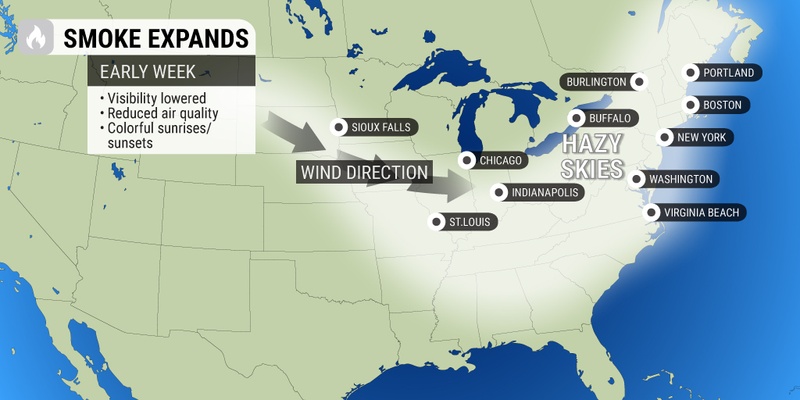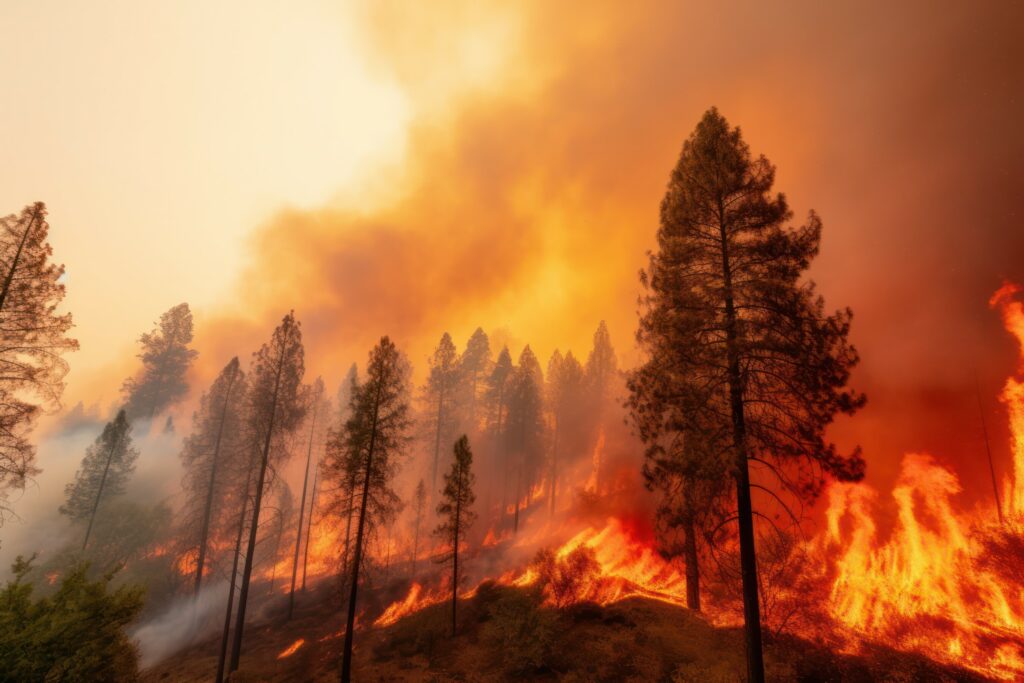
Heavy Rain, Flooding, and Chance of Severe Weather Staring Down the Southern U.S.
January 22, 2024
Posted: July 18, 2023 10:59 am





While it has been a slow start to the wildfire season in the western U.S., experts are still expecting the activity to intensify in the coming weeks. The record-setting wildfire season already underway in Canada could serve as a preview of what is to come in the U.S. Here is what you can expect as the summer wildfire season gets underway.
It has been an unusually quiet start to the wildfire season out West. A wetter than normal winter and spring can be credited for the calm conditions. Not only did this constant parade of atmospheric rivers help to erase the drought conditions across the region but the moisture also worked to delay the start of the wildfires.
However, a shift in the weather pattern is set to raise the risk of wildfire danger in the western U.S. during the last half of July. This change could serve as the fuel for wildfire development in this part of the country.
And just as the atypical amount of moisture erased much of the drought, it also encouraged lusher and more dense vegetation growth. This growth will give any embers more vegetation to work with and burn.
What is most worrisome to climatologists is the current heat dome that is anchored over the Southwest. This area of high pressure is forecast to continue to expand in the coming days. By the end of last week, over 95 million Americans were under some level of excessive warnings or heat advisories as the temperatures continued to soar.
The high pressure and its resulting heat will support the development of wildfires heading into the dog days of summer. This is because hot and dry weather tends to dry out vegetation and set the backdrop for fires to easily ignite.
The greatest risk of wildfire development in the U.S. will be in Texas, Arizona, New Mexico, California, Washington, Oregon, Idaho, Nevada, Utah, and Colorado.
How quiet has it been on the wildfire front this year in the U.S.? As of last Friday, only 750,000 acres had burned across the country in 2023. This number equates to just 26% of the historical average by this time of the year, marking the slowest start to the fire season since 2014.
This amount compares to 5.1 million acres that had already burned by July 14, 2022.
Climate experts note that the current wildfire situation is similar to what you would expect to be happening in the middle of May and not the middle of July. However, experts warn that the peak of the wildfire season does not typically happen until late August or early September, meaning that the U.S. is far from out of the woods.

Also of concern is that the annual North American monsoon season is set to get fired up quickly. These rounds of persistent storms across the Southwest generally ramp up in July. The yearly delivery of mass amounts of moisture across this corner of the country happens when the winds shift direction.
The official monsoon season runs from June 15 through September 30. However, meteorologists predicted earlier in the year that the season would get a late start in 2023.
While the moisture associated with the monsoon rains is usually good news for the dry landscape, the storms also come with the risk of dry lightning. These lightning strikes carry the risk of elevated fire danger. All it takes is one act of Mother Nature to start a fire across the dry ground and vegetation.
In fact, lightning strikes have been identified as the second most likely source of wildfire ignition. Only human-caused decisions start more wildfires than lightning.
The good news for Canadians is that relief from the ongoing fire threat appears to be headed toward the western portion of the country. This week’s forecast is predicting that a meaningful storm system will move across British Columbia and Alberta on Monday and Tuesday.
Canada has experienced its worst wildfire season in history this year. As of Friday’s report, there have been over 27.8 million acres burned across the nation. This figure is over 1,200% of the historical average through the middle of the July.
The previous record of 17,559,303 acres dates back to 1995. Some predictions estimate that Canada will see upwards of 40 million acres burned by the end of the year if the fires keep up with this blistering pace..
In addition, almost 3.4 million acres were scorched on Thursday alone, speaking to the fact that the situation is not yet under control. Although it was Quebec dealing with the worst of the fires a few weeks ago, the threat is back in the western provinces of British Columbia and Alberta.
The U.S. has also been impacted by the wildfires in Canada as dangerous smoke drifts southward across the border. The latest forecast calls for another plume of smoke and haze to creep to the southeast and settle over the north-central U.S. to start the week.
The smoke may eventually make it to the Midwest. Be sure to check the air quality alerts if you live in this part of the U.S. and are sensitive to these impacts.
Did you find this content useful? Feel free to bookmark or to post to your timeline for reference later.

January 21, 2024

January 19, 2024

January 18, 2024